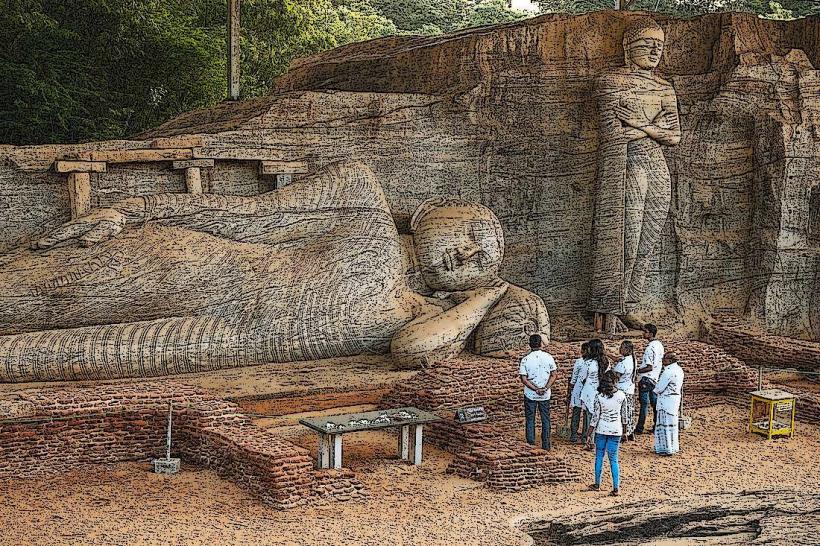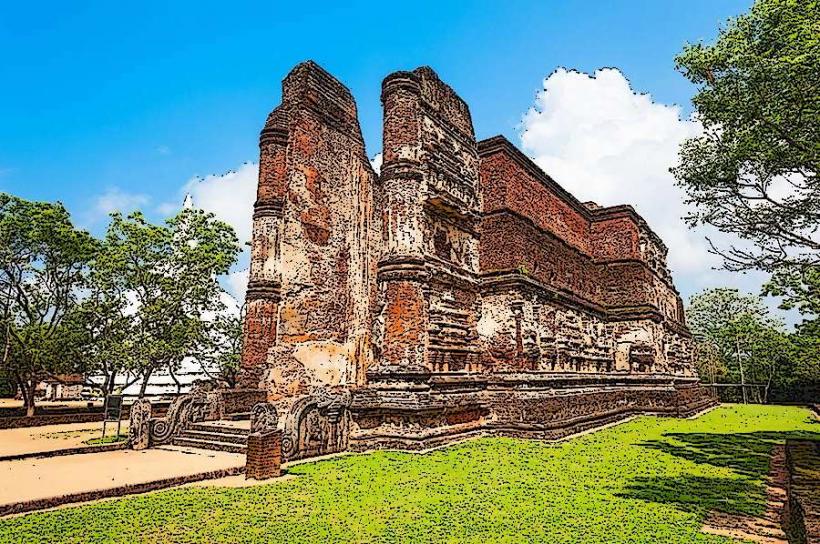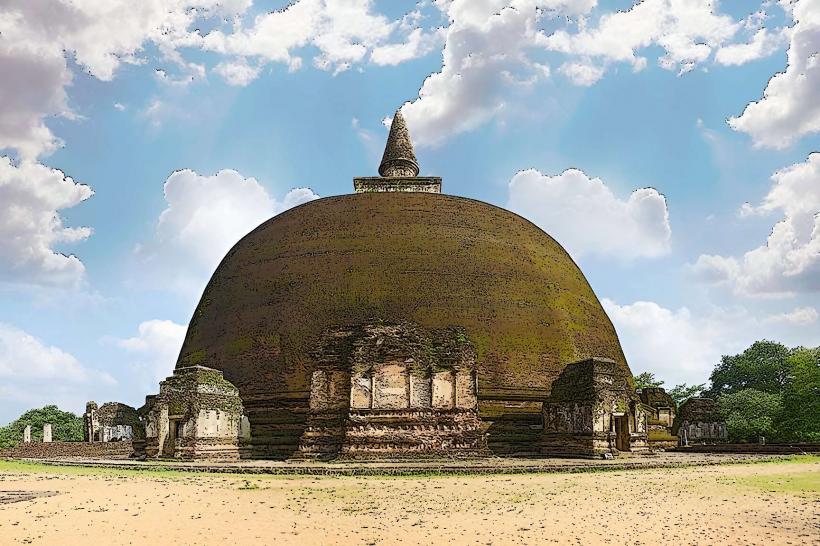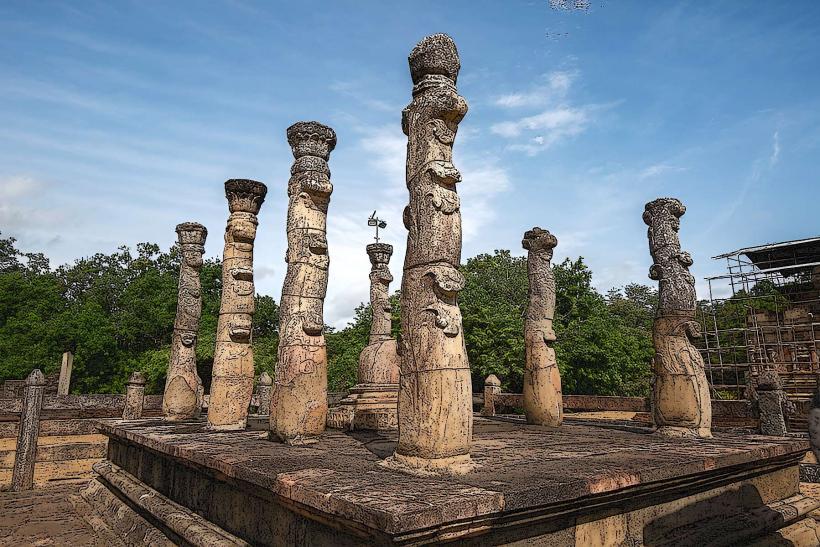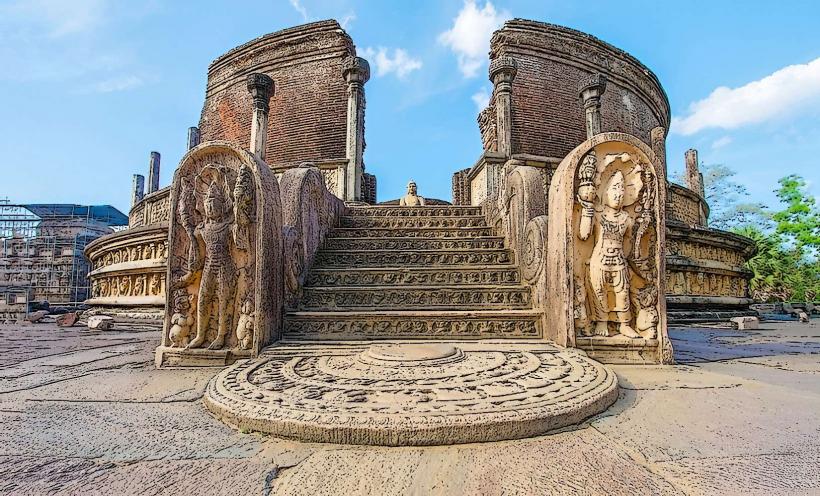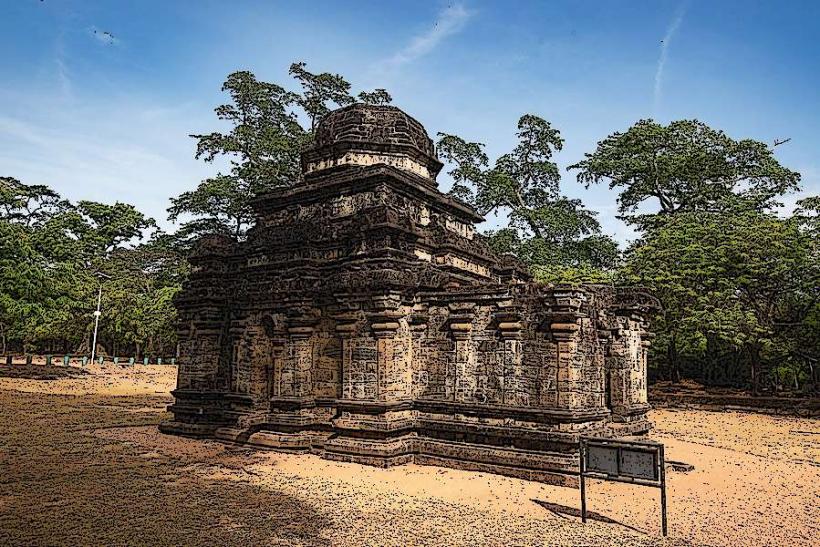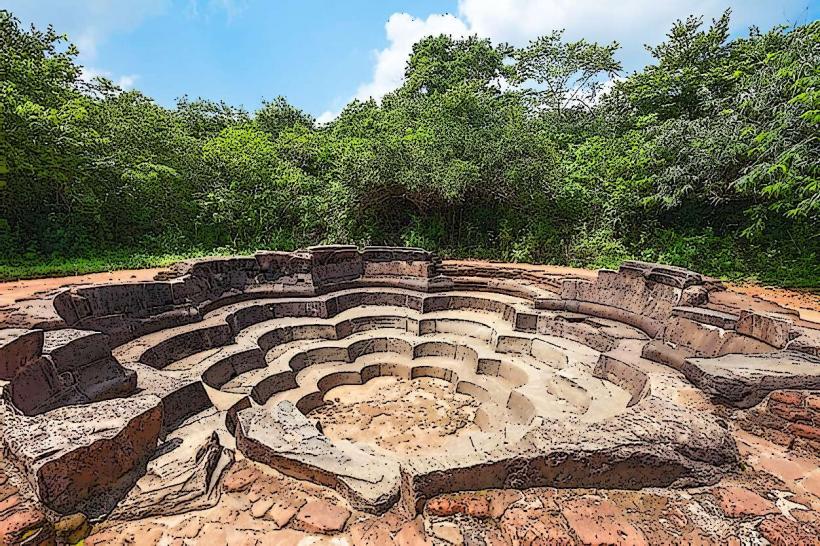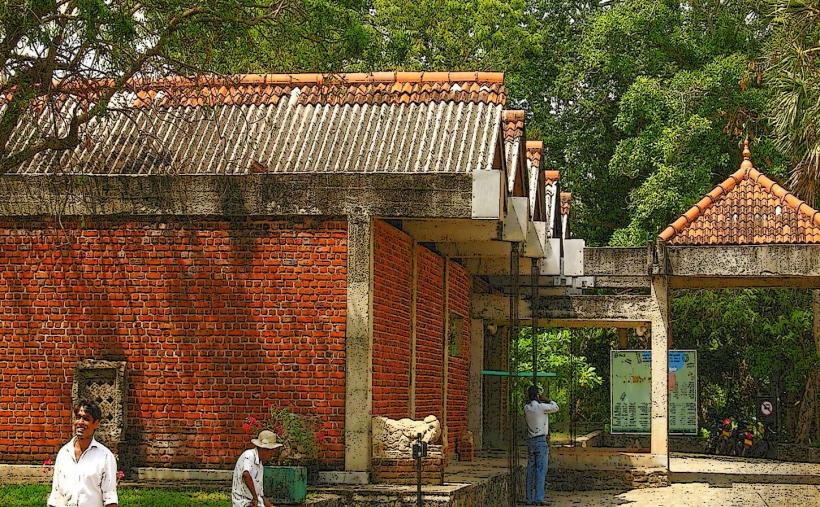Information
Landmark: HatadageCity: Polonnaruwa
Country: Sri Lanka
Continent: Asia
Hatadage, Sri Lanka
Hatadage is an ancient Buddhist temple located in the Polonnaruwa archaeological zone of Sri Lanka. It is historically significant due to its connection to the Polonnaruwa period (12th century CE), particularly the reign of King Parakramabahu I, who made extensive contributions to Buddhism and the construction of religious monuments across Sri Lanka. The temple is known for its relic chamber and its association with the sacred Tooth Relic of the Buddha.
Overview
- Name: Hatadage
- Location: Polonnaruwa, North Central Province, Sri Lanka
- Date: Built during the reign of King Parakramabahu I (12th century CE)
- Type: Buddhist Temple, Relic Chamber
- Purpose: Religious, Historical, Cultural
Historical and Cultural Significance
King Parakramabahu I’s Role:
- Hatadage was constructed during the reign of King Parakramabahu I, who ruled from 1153 to 1186 CE. The king was a significant patron of Buddhism, and his reign saw the development of many key Buddhist structures, including temples, stupas, and reservoirs.
- The name Hatadage means "The House of the Tooth," which indicates its important role in housing the Tooth Relic of the Buddha. The Tooth Relic was a symbol of royalty and spiritual authority, and it was believed that whoever held the Tooth Relic had the right to rule Sri Lanka.
Relic of the Buddha:
- Hatadage is famous for being a repository for the Tooth Relic, one of the most sacred relics in Buddhism. During the reign of King Parakramabahu I, the relic was housed in this temple before being moved to the Dalada Maligawa in Kandy in later centuries. The Tooth Relic was considered a symbol of power and spiritual authority, and its preservation was crucial for the legitimacy of the monarchy.
- The stupa and the surrounding buildings were constructed with the specific purpose of safeguarding the sacred relic.
Architectural Importance:
- The structure of Hatadage is distinctive for its use of stone and brick, typical of the Polonnaruwa architectural style. It is known for its rectangular shape, which was common for temples of this period.
- The temple was designed to be both a place of worship and a secure location to house the relic. The roofed structure would have been adorned with fine carvings and stone sculptures, many of which are still visible today.
Relation to Other Polonnaruwa Temples:
- Hatadage is part of the broader Polonnaruwa archaeological complex, which includes other important Buddhist sites like the Gal Vihara, Rankoth Vehera, and the Royal Palace. These sites all served the spiritual and administrative needs of the kingdom during the Polonnaruwa period.
- Hatadage’s proximity to other Buddhist temples highlights its religious significance in the context of the broader Buddhist culture in Polonnaruwa.
Key Features
Relic Chamber:
- The central feature of Hatadage is the relic chamber that housed the Tooth Relic of the Buddha. This chamber is small and simple but sacred in its purpose. It was specifically designed to protect the relic and maintain its sanctity. The chamber was also the site of religious rituals and ceremonies performed to honor the Buddha and his teachings.
Architectural Design:
- The design of Hatadage is characterized by simplicity and functionality, reflecting the purpose of the temple as a relic shrine. The temple features stone steps, a raised platform, and the rectangular shrine where the relic was kept.
- Some of the stone carvings and sculptures that originally adorned the temple can still be seen today, adding to the historical significance of the structure.
Stone Sculptures:
- The temple site includes stone sculptures that depict Buddhist themes, such as the Buddha's life and Jataka tales. These sculptures are part of the stonework that adorns the walls and pillars of the temple. They provide a glimpse into the artistic and religious traditions of the Polonnaruwa period.
- Some of the carvings on the temple’s walls also reflect the regal significance of the Tooth Relic and its importance in securing the political legitimacy of the ruling king.
Ruins of the Temple:
- Although much of the original structure has been lost to time, the ruins of Hatadage remain an important historical site. Visitors can still explore the temple’s foundations and the surrounding area, which includes remains of the stone foundation and pillars.
- The simplicity of the ruins contributes to the atmosphere of serenity and spiritual reflection that visitors experience while exploring the site.
Visitor Experience
Religious and Historical Reflection:
- Visiting Hatadage offers a chance to reflect on the spiritual and political history of Sri Lanka. The temple’s role in preserving the Tooth Relic and its association with the reign of King Parakramabahu I gives visitors an opportunity to learn about the historical role of Buddhism in Sri Lankan monarchy and governance.
- The serene atmosphere of the temple site allows visitors to connect with the religious traditions of ancient Sri Lanka, making it a peaceful place for meditation and reflection.
Exploration of the Ruins:
- The ruins of Hatadage are part of the broader Polonnaruwa archaeological park. Visitors can explore the remains of the temple, which include the relic chamber, stone carvings, and other features that provide a sense of the temple’s original design and purpose.
- The site is relatively quiet, with few crowds, allowing for a more intimate experience compared to some of the larger, more popular tourist attractions in Polonnaruwa.
Educational Value:
- Information boards at the site provide historical context about Hatadage and its significance to the Polonnaruwa period. Visitors can learn about the importance of the Tooth Relic in the context of Sri Lankan kingship and the temple’s role in the island’s Buddhist history.
- For those interested in Buddhist architecture, the site offers valuable insights into the design principles and craftsmanship of the era, as well as the spiritual and cultural context in which these structures were built.
Conclusion
Hatadage is a historically significant Buddhist temple in Polonnaruwa, Sri Lanka, with deep connections to the island’s religious heritage and monarchical history. Built during the reign of King Parakramabahu I, it served as a repository for the sacred Tooth Relic of the Buddha and was an essential part of the religious and political life in the Polonnaruwa period. Today, the site offers visitors a chance to experience Sri Lanka’s ancient religious architecture and learn about the country’s Buddhist traditions and the historical role of the Tooth Relic in governance and spirituality.


